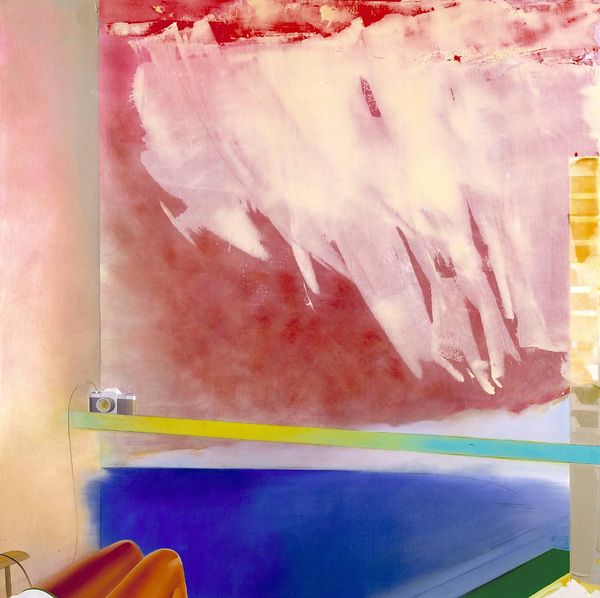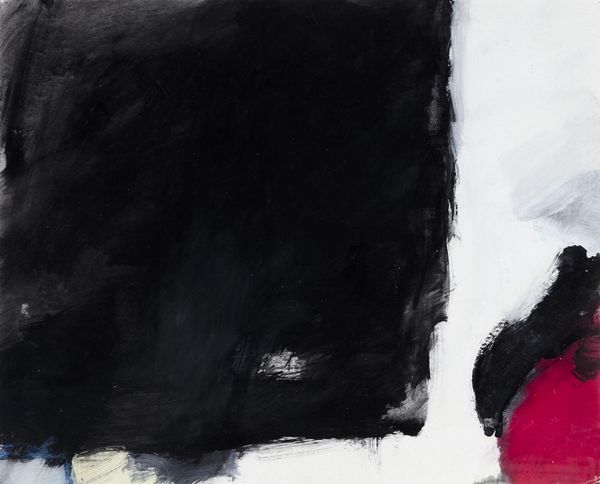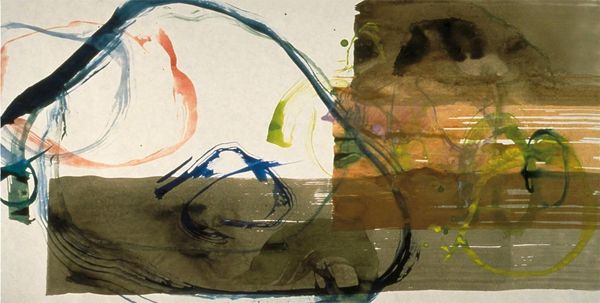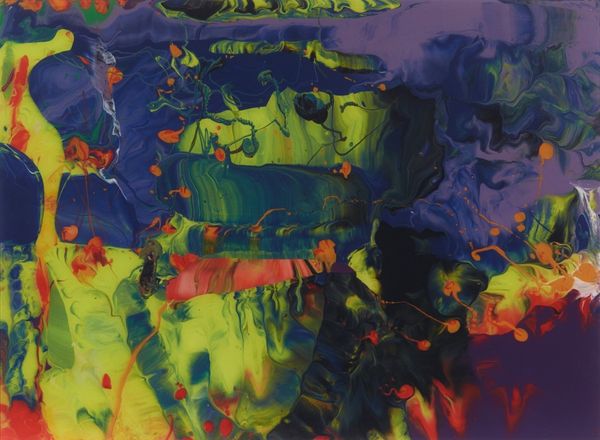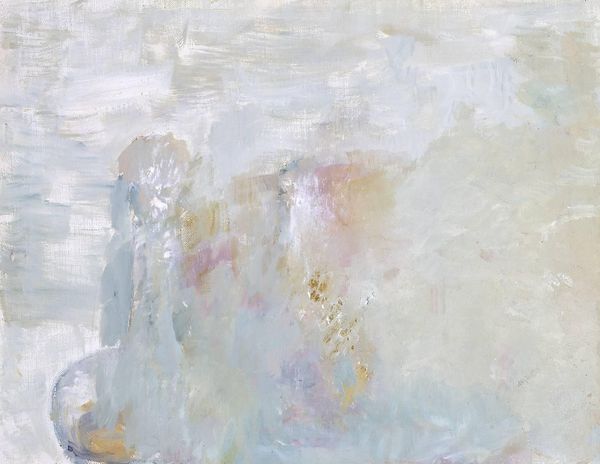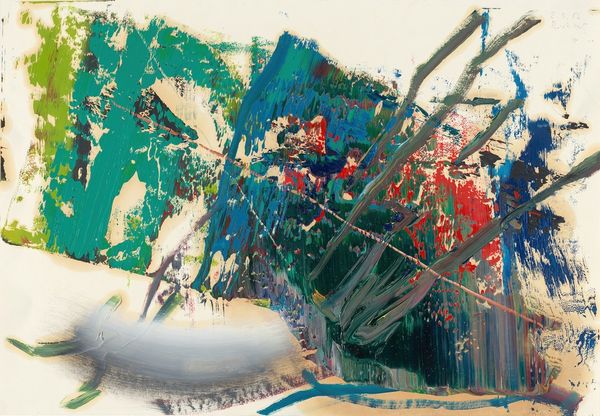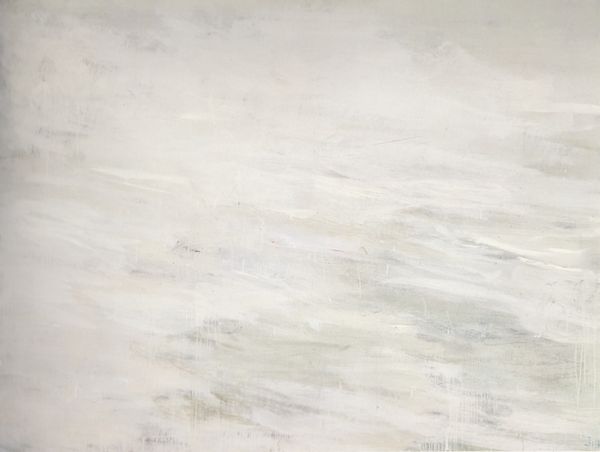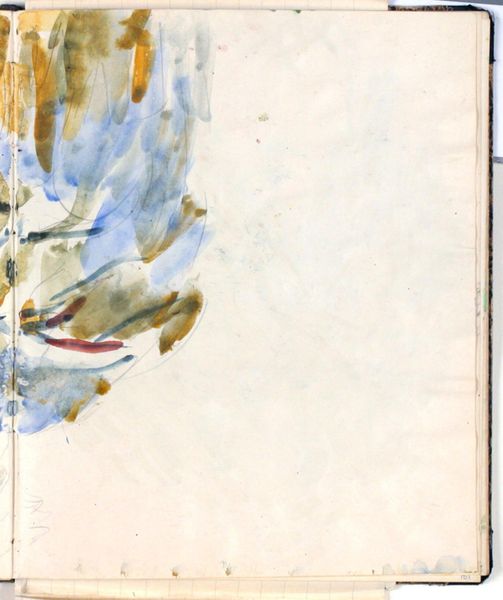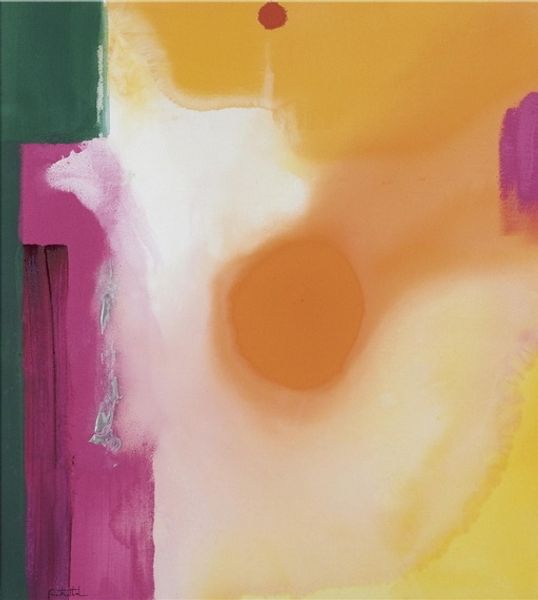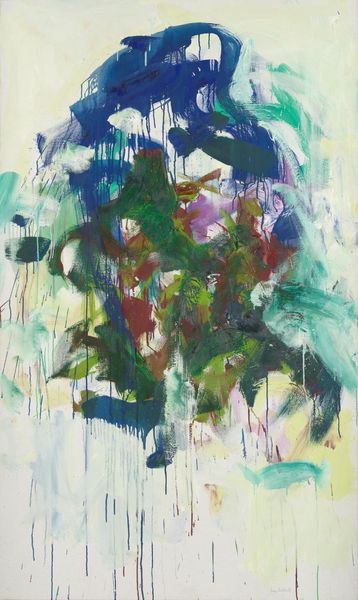
Copyright: Helen Frankenthaler,Fair Use
Curator: So peaceful, almost like gazing into a still pond. A sigh made visible, perhaps? Editor: Indeed. We're looking at "Where Necessary," an acrylic on canvas piece created in 1977 by Helen Frankenthaler. Part of her exploration of Color Field painting and Abstract Expressionism. What pulls you into this sigh? Curator: It's the gentleness, that soft-edged blue dominating the space. Yet there’s this push and pull between intention and chance – you see how the colours bleed and merge, those unexpected blooms. It feels incredibly…honest. A brave surrender to the process. Editor: Surrender is key here. Frankenthaler championed the stain technique, pouring thinned paint directly onto unprimed canvas, allowing the colours to soak and become one with the material. This challenged traditional painting conventions in pretty radical ways, removing much of the artist’s direct physical touch. The canvas wasn't just a surface, but an active participant. Curator: Which transforms the piece itself into almost an event, or record of an event. More than a painted picture, a living moment where the colours find each other. Do you feel that it carries a similar effect? Editor: Absolutely, and her radicality wasn't only on the level of process. With a formal language deeply rooted in abstraction and colour theory, artists like Frankenthaler shifted painting from narratives and figures to more open, democratic forms of expression. This resonates particularly well, considering her important position as a woman in a male dominated field of art. Curator: You almost feel as if you were diving into pure sensation, allowing for something other than thought to find you. Something visceral. Almost an ecstatic freedom, that, surely, must have shifted gendered conceptions of creative creation. Editor: Indeed. From an art-historical vantage, the canvas reveals the cultural backdrop of 1970s America – a world transforming with gender movements. Through bold gestures Frankenthaler painted abstract freedom onto the cultural imagination, demanding attention to be placed not only on *what* was being painted, but *who* was painting it, as well. Curator: Beautiful. Well, whatever *it* is, “Where Necessary” has certainly found me, or rather, my gaze, here today. I suppose art does, doesn't it? Bring us into places we didn't realize we so very needed to visit. Editor: Yes. It offers these strange rendezvous with possibility. Thank you for guiding us into the depths of this evocative work, inviting the viewers to perhaps find a different view of its "necessity".
Comments
No comments
Be the first to comment and join the conversation on the ultimate creative platform.
